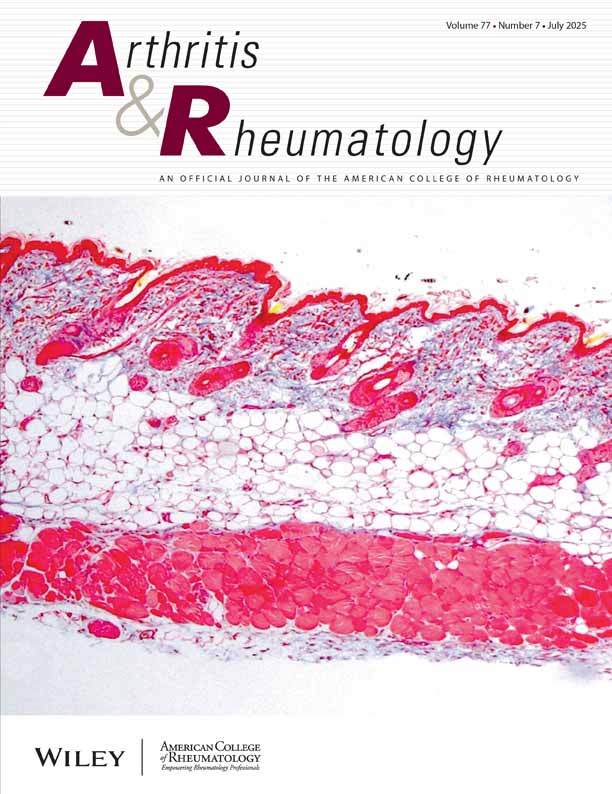Prospective study of fetal DNA in serum and disease activity during pregnancy in women with inflammatory arthritis
Abstract
Objective
Rheumatoid arthritis (RA) usually improves during pregnancy and recurs postpartum. Fetal cells and cell-free DNA reach the maternal circulation during normal pregnancy. The present study investigated dynamic changes in levels of fetal DNA in serum from women with RA and inflammatory arthritis during and after pregnancy to test the hypothesis that the levels of circulating fetal DNA correlate with arthritis improvement.
Methods
Twenty-five pregnant patients were prospectively studied. A real-time quantitative polymerase chain reaction panel targeting unshared, paternally transmitted HLA sequences, a Y chromosome–specific sequence, or an insertion sequence within the glutathione S-transferase M1 gene was used to measure cell-free fetal DNA. Results were expressed as fetal genomic equivalents per milliliter (gE/ml) of maternal serum. Physical examinations were conducted during and after pregnancy.
Results
Levels of fetal DNA in women with improvement in or remission of arthritis were higher than those in women with active disease, especially in the third trimester. Overall, an inverse relationship between serum fetal DNA levels and disease activity was observed (P < 0.001). Serum fetal DNA increased with advancing gestation, reaching median levels of 24 gE/ml (range 0–334), 61 gE/ml (range 0–689), and 199 gE/ml (range 0–2,576) in the first, second, and third trimesters, respectively, with fetal DNA clearance observed postpartum. Arthritis improvement was initially noted in the first trimester for most patients, increased further or was sustained with advancing gestation, and was active postpartum.
Conclusion
Changes in serum fetal DNA levels correlated with arthritis improvement during pregnancy and recurrence postpartum. Immunologic mechanisms by which pregnancy might modulate RA activity are described.




